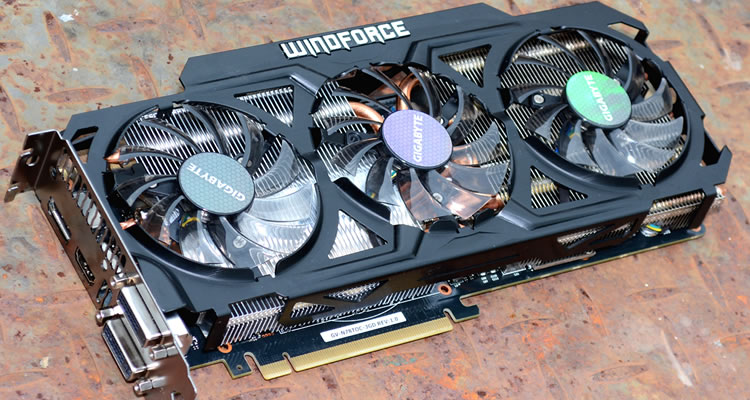The New High-End Graphics Mark
"The GeForce GTX Titan is in a master class of what is technically possible right now" is what we said about Nvidia's flagship back in March, and that statement held true for a while. Since then, Nvidia has enabled another SMX unit (containing 192 CUDA cores) on its 561mm2, 7080-million-transistor die, making the GTX 780 Ti its most powerful and complex GPU to date, besting even the dual-GPU GTX 690 at times and performing about equal with a pair of last year's flagship graphics cards – awe inspiring to say the least.
On average, the GTX 780 Ti was 24% faster than the GTX 780 and 9% faster than the R9 290X and those margins jumped to 34% and 18% with Gigabyte's GTX 780 Ti OC. The company's factory-overclocked card was also 8% faster than a standard GTX 780 Ti along with outclassing dual-GPU products from both camps when playing titles including Tomb Raider and Metro: Last Light at 2560x1600. As incredible as those results are, Gigabyte's GTX 780 Ti OC doesn't entirely overshadow the GTX 780 GHz Edition.
For instance, the GHz Edition card was just as impressive providing nearly 20% more performance than a standard GTX 780 on average, which works out to about 5% slower than the standard GTX 780 Ti and 4% faster than the Radeon R9 290X. Despite those massive gains from factory, we extracted another 8% from each card by overclocking them further and what's most impressive is that we didn't have to adjust the WindForce 3X's coolers, which remained extremely quiet during loads – a rarity on stock high-end cards.
Unfortunately, neither of Gigabyte's cards seem to be available online yet, at least not through major retailers we typically use, and that makes it difficult to assess their value. It seems reasonable to assume they will be within ~$20 of Nvidia's MSRP, as Gigabyte's GTX 780 OC (GV-N780OC-3GD) has the same 450W cooler and costs just $510 (only $10 more). If that's indicative of what we can expect, then Gigabyte's GTX 780 GHz Edition should be around $520 and the GTX 780 Ti OC might be $710 or so.
At those rates, the GTX 780 Ti OC would be 30% pricier than the R9 290X and 78% more expensive than the R9 290, despite being only 18% and 24% faster. The Radeon cards are more affordable and offer less brute performance, but they remain a pretty good value.
Similarly, assuming Gigabyte's GTX 780 GHz Edition will cost $520, it'd be 5% cheaper and 4% faster than the R9 290X, so that's an obvious choice. Against the non-X R9 290 however it offfers a less impressive standing when you see that it's 30% more expensive and just 10% faster. Perhaps even worse than those figures, the GTX 780 Ti costs 40% more than the GTX 780 while being only 24% faster.
Those ratios don't bode particularly well for Nvidia's GTX 780 Ti, which seems like it might find itself in company with the GTX Titan. If you want the fastest single-GPU available, you'll have to pay for it and that's always going to be the case. At the end of the day, we really like the GTX 780 Ti OC and GTX 780 GHz Edition – especially the latter – but the reality is that AMD's R9 290 offers similarly rock solid results for $300 less, and that's enough savings to sway our recommendation for now.
Pros: Fast, faster and fastest are the GTX 780 GHz Edition, GTX 780 Ti and GTX 780 Ti OC, offering dual-GPU performance that's nearly inaudible with Gigabyte's cooler.
Cons: Pricey, pricier and priciest they are, too. At $500-$700+, you can expect to pay a serious premium over AMD's $400 Radeon R9 290, which is often similarly fast.



